Nvidia DLSS 3 Revisit: We Try It Out in 9 Games
After its big splash, today we're taking a second look at Nvidia's DLSS 3 technology to see what has changed and improved over the last few months. The first time we explored it was at the launch of the GeForce RTX 4090 with mixed feelings; it can work well in the right circumstances, but the tech was let down by visual and latency issues. This led us to only recommend using it in a narrow range of conditions, compared to DLSS 2 which is largely beneficial to all GeForce RTX owners.
Since then, Nvidia has been working hard on improving "frame generation" technology. Crucially, Nvidia claims that network enhancements can "better take advantage of game engine data, improving UI stability and image quality during fast movement," with an example presented in Cyberpunk 2077.
Since this announcement, DLSS 3 was officially added to Cyberpunk and many other games, including launch day inclusions in major titles such as Hogwarts Legacy. So this presents the perfect opportunity to not only revisit the titles we looked at in our initial review of DLSS 3, but also check out newer games that support it.

In fact, it's rather impressive how quickly Nvidia has been able to get DLSS Frame Generation into games, especially after the hesitant and slow uptake of both DLSS 1.0 and DLSS 2. While the game list is still small relative to other upscaling technologies, some big new titles have been including it while others from last year have gone back to integrate support.
This includes Nvidia sponsored titles like Atomic Heart and Dying Light 2, as well as neutral titles like Hogwarts Legacy, so there's been a good mix. In today's feature we're going to revisit all three games we looked at in our initial coverage, while also adding in analysis from six more games. The focus will largely be on visual analysis and artifacts, as the discussion around latency hasn't changed significantly since launch.

The system we used for testing is based on the AMD AM5 platform, powered by a Ryzen 9 7950X CPU along with a GeForce RTX 4080 GPU from Galax. As a reminder, Frame Generation is only available on RTX 40 series graphics cards and while we'd ideally like to test the tech on a mid-range option as that's where we feel it could be most useful, there are none of those yet on the market.
Cyberpunk 2077 Revisit
First, let's take a look at Cyberpunk 2077, the game that Nvidia claims has definitely received an improved DLSS 3 experience. And immediately upon first glance this is true.
The original DLSS 3 preview build we received for our initial coverage had several issues, one of which was garbled UI elements in motion, a common issue across DLSS 3 games. But the updated version that went live for the public does not. You can see in the side by side driving scene below that the old build had a lot of difficulty generating these UI elements, but in the new build this has been fixed, so you won't see this distracting artifact any more in this title.
For a better representation of image quality comparisons, check out the Hardware Unboxed video below:

The initial build also had issues with some texture elements like fine grating details on street curbs, frame generation was producing this horrible garbled artifact in motion. This has also been resolved, giving us a much cleaner and less distracting presentation.
I also spotted some improvements for fine element reconstruction and generation in motion. DLSS 3 had this tendency for fine elements to flicker and sizzle in motion. The very finest details are a bit clearer and flicker-less in this new implementation, which is a good improvement, though less important compared to the UI and texture issues discussed before.
Unfortunately, some of the more fundamental artifacts from DLSS 3 frame generation are still present in the latest build of Cyberpunk. For example, we showed that fast moving objects like cars would look quite garbled and blurred in generated frames, and while this wasn't particularly noticeable in motion at higher frame rates as each of these garbled frames is interlaced between a good frame, depending on the frame rate and the exact object seen, it could be noticeable. This sort of motion is very difficult to deal with in generated frames, and fundamentally the newer version of DLSS 3 still has issues, so looking at this footage slowly still reveals terrible reconstruction for moving cars as an example.
I also still spotted some sizzling in other conditions for things like overhead wires, which I flagged in our initial review. While fine details flicker less in this new version based on my experience, there are elements which will have issues with sizzling, a definite area for improvement with DLSS 3 moving forward. Again, it can be hard to notice at higher frame rates as it's only every second frame where these appear, but it's unchanged compared to the preview build we looked at last year.
F1 22 Revisit
In F1 22 it's a less positive story for DLSS 3 improvements. While in Cyberpunk we saw an elimination of UI garbling, that isn't the case in the latest version of this popular racing game.
UI elements floating above each driver are still garbled in motion with frame generation enabled, and this is one of the most noticeable artifacts across all of the games I've tested in my opinion. Very disappointing to see this hasn't been resolved.
Click on the video to jump to the scene described on this section.

The rest of this game looks largely identical to when we first tested it, but I did spot one issue being resolved in the latest version and that's how DLSS 3 handles camera angle changes.
In the previous version, DLSS 3 would attempt to interpolate between the first and second camera angles for the split second the change was occurring. It would essentially take the last real frame of the first angle, the first real frame of the second angle, and blur the two together.
This looked terrible and again, it was hard to spot while gaming but if you did see it, it wasn't a good experience. In the updated version, those frames generated between two camera angle changes are dumped and not shown, which is a good improvement though a less essential fix than the UI.
Flight Simulator Revisit
In Flight Simulator we couldn't spot any fundamental updates to DLSS 3 since we looked at it last year. I don't know for sure whether Asobo Studios have done any work on the Frame Generation implementation since then, but on a visual inspection it doesn't seem like it's taking advantage of the improvements Nvidia talked about at CES.
Click on the video to jump to the scene described on this section.

There's still visible garbling and blur when performing specific motions like we showed in our initial review, and there's also UI issues which are very distracting. It's disappointing to see that while Cyberpunk was able to overcome these problems, the same sort of fixes weren't provided to other DLSS 3 launch titles.
But perhaps the more disappointing discovery is that F1 22 and Flight Simulator are not alone in their inability to handle UI elements correctly with frame generation enabled.
UI Issues Everywhere
UI elements are reconstructed poorly with garbling and sizzling in Spider-Man Remastered as well as on A Plague Tale: Requiem. Both of these were among the first to receive DLSS 3 support, and both have these problems in the latest builds of the game.
I also spotted UI issues in Dying Light 2 and Hitman 3, both of these titles were updated to support DLSS 3 in January, after Nvidia's presentation. Clearly neither of these titles has benefitted from improvements to frame generation as discussed by Nvidia, either that or they are still using an old version of DLSS, or the tech has been poorly implemented. Either way these games do not handle UI elements well, especially any UI icons or text that move in the game world.
Click on the video to jump to the scene described on this section.

But worst of all, when the UI is concerned, is that the very latest DLSS 3 games that launched in February 2023 with DLSS 3 support also handle the UI badly.
It's actually kind of baffling that Nvidia specifically talked about fixing this in early January, yet more than a month later we had Hogwarts Legacy and Atomic Heart both launch with UI reconstruction problems with frame generation enabled. When 8 out of 9 games we tested including two of the most recent releases all struggled with UI elements, I would absolutely not call this problem solved.
How noticeable these are varies between each game. Titles that have a more limited selection of UI elements and don't use waypoint markers as often, such as Hitman 3 and A Plague Tale: Requiem, are mostly fine and don't distract too much from the experience. But games that do use waypoints or a compass can suffer especially when you're focusing on those markers to navigate the world. It's an element that draws your eye and looks bad in motion.
Perhaps worst of all are games like Atomic Heart which can also include floating in-game subtitles above the heads of characters, the way this game integrates those elements and animates the text as the characters speak is particularly susceptible to DLSS 3 UI garbling, which can make it harder to read the text in motion.
This needs to be the number one area of focus for DLSS 3 improvements and if game developers simply aren't integrating the technology properly even after Nvidia claims to have solved UI issues, then Nvidia maybe needs to get more involved.
But Elsewhere, Games Look Decent
The good news is that when we ignore UI issues across the six new titles I looked at, the image quality in general from frame generation is pretty decent. It does vary from title to title and can depend on what specifically you are doing in those games, but in most cases I found it difficult to spot artifacts in motion, especially at reasonable frame rates.
Click on the video to jump to the scene described on this section.

The best examples of DLSS 3 are slow paced titles that by virtue of their gameplay do not have a lot of fast motion. Hitman 3, for example, typically runs quite well without ray tracing enabled, so DLSS 3 running with a final frame rate around 130 FPS showed up very few artifacts at all during normal gameplay.
Most of the artifacts I spotted were more related to running DLSS upscaling on its Quality setting, rather than frame generation itself. It was only when slowing the footage right down to a slideshow was I able to tell which frames were generated and whether frame generation was on, so this game is a great example of the tech working well, outside of UI issues.
It's a similar story for A Plague Tale: Requiem. This is also a slow single-player title with stealth gameplay, so the differences between each frame are not large and DLSS 3's frame interpolation is able to work well. In general gameplay I was unable to spot many noticeable issues at a reasonable frame rate. I had DLSS 3 outputting around 100-110 FPS compared to a 60-80 FPS baseline and even when running I only spotted the occasional bit of sizzling.
However, both of these titles had two issues. Hitman 3 and A Plague Tale both had issues with camera cuts that were most evident during cutscenes. Between the camera cut a single garbage frame will appear on screen that blends the two camera angles together. I also spotted some flickering for moving bright objects in the frame generation presentation. In A Plague Tale this was the eyes on rats, which are brighter in each rendered frame but dimmer in each generated frame. This causes a flickering or pulsing that again, isn't super noticeable, but isn't as clean as the native presentation. In Hitman 3 this was rain, a similar sort of issue there.
Dying Light 2 was generally a good example for DLSS 3 despite being a faster paced first person title, the major issues here being the UI problems discussed earlier, and the occasional sizzling for fine details in motion. When I really punished the technology by running with a final output frame rate around 70 to 80 FPS, indicating a base frame rate of around 40 FPS, the artifacts in motion did become apparent during combat scenarios with lots of moving objects. But I'd say this game at reasonable frame rates had fewer issues than the initial release of say, Cyberpunk 2077 with DLSS 3 that we covered in our initial video.
Spider-Man Remastered and Hogwarts Legacy share similar issues when it comes to their DLSS 3 implementations. Generally speaking, when playing these titles at reasonable frame rates you'll see few artifacts, even during faster motion such as swinging around in Spider-Man, or flying on your broom in Hogwarts. But the bigger issue with these games is running. When your character's legs are moving quickly this can create noticeable garbling that I found somewhat annoying. You're not often looking at this during gameplay, so you may not notice this if you're focusing on other areas of the screen, but it's a flaw in the DLSS 3 presentation as it can't handle that sort of fast motion well.
With that said, Spider-Man and Hogwarts can be quite CPU demanding in some areas, so frame generation is one of the only ways to improve smoothness in those scenarios. It can be quite useful there, especially when roaming around the Hogsmeade area in Hogwarts Legacy as one example.
Yes, you will see artifacts at times, but when a high-end system with a flagship CPU and high-end GPU is only capable of around 60 FPS natively even on reduced quality settings, I'd prefer to use frame generation than not - whereas in other titles it may be preferable to reduce quality settings or opt for a lower DLSS 2 setting.
Atomic Heart is similar to the other games discussed in its DLSS 3 visuals, with the strengths and drawbacks already mentioned. The biggest issue was the UI quality and right now I simply couldn't recommend using frame generation in this game with subtitles enabled. Outside of this, the image quality was acceptable for a single-player title and similar to what was seen in Dying Light 2.
To DLSS or Not to DLSS?
It's been good to revisit DLSS 3 after we first looked at it last October when GeForce RTX 40 series GPUs were just hitting the market. Like with DLSS 2 over the years, Nvidia is working to improve the DLSS 3 experience and in at least a couple of titles that's definitely the case.
Based on assessing 9 games for this review, DLSS 3 is mostly the same as we saw before, with a few minor improvements here and there. The latest version is less susceptible to random garbled textures and is slightly better at handling fine objects in motion. Across all the games I looked at, in general it can be hard to spot issues when the game is being run at an acceptable frame rate.
In our initial review we said a base frame rate around 60 to 80 FPS was optimal for making artifacts less noticeable, with DLSS 3 therefore producing an output frame rate around 100 to 120 FPS.
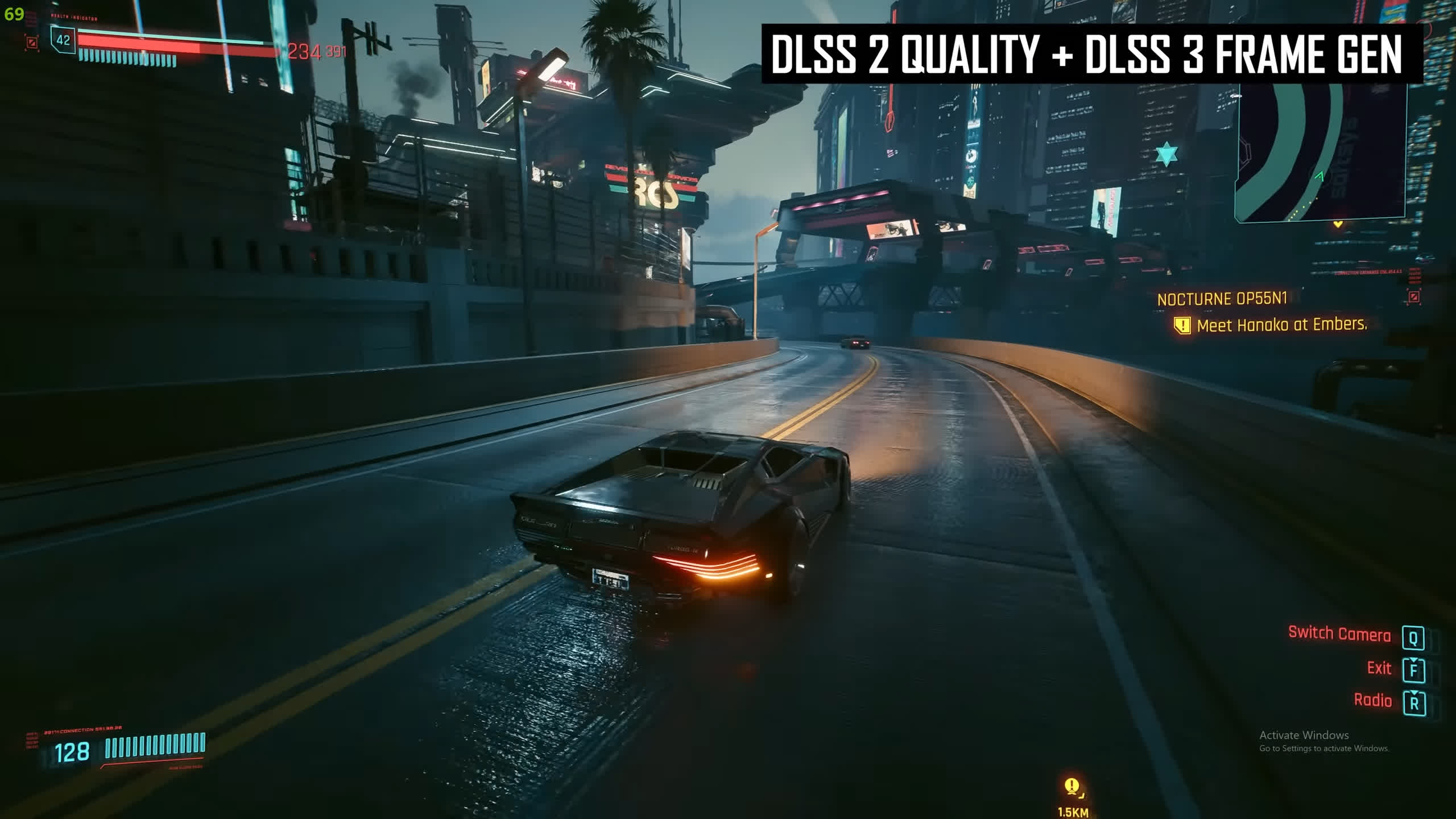
Based on a wider sample of games and recent improvements, we think in the best cases you could probably get away with a base frame rate of 50 to 60 FPS with DLSS 3 producing 90 to 100 FPS. This will vary though, games with more motion require higher base frame rates, but slow paced titles like Hitman 3 do look good at those lower figures.
Just don't expect DLSS 3 to take your 30 to 40 FPS experience up to 60 FPS and have it look good, like in our original assessment, that's really not a good use case for this technology because you'll start to notice many visual issues.
This assessment has so far ignored the issues with UI rendering though. It was disappointing to see that while Nvidia has been able to fix UI reconstruction in Cyberpunk 2077, this fix hasn't been applied to any of the other titles we looked at. This means that 8 out of 9 games still have some form of UI issue, ranging from garbled interaction icons to blurred and flickering subtitles. There's still lots of work to be done there if brand new games like Atomic Heart are launching with frame generation UI issues.
What's even more disappointing about this situation is that some games could have been fixed by simply updating the version of DLSS being used. For example, in Hogwarts Legacy we used the tried and true method of replacing the DLL file with a more recent version, updating it from DLSS 3 v1.0.3 to v1.0.7. In this title the UI issues were largely resolved after applying this manual update, which is embarrassing for the developers given this DLL was made available before Hogwarts Legacy launched. It's good news for those who can manually update, but not everyone knows about this little hack and it shouldn't be on gamers themselves to patch the DLL.
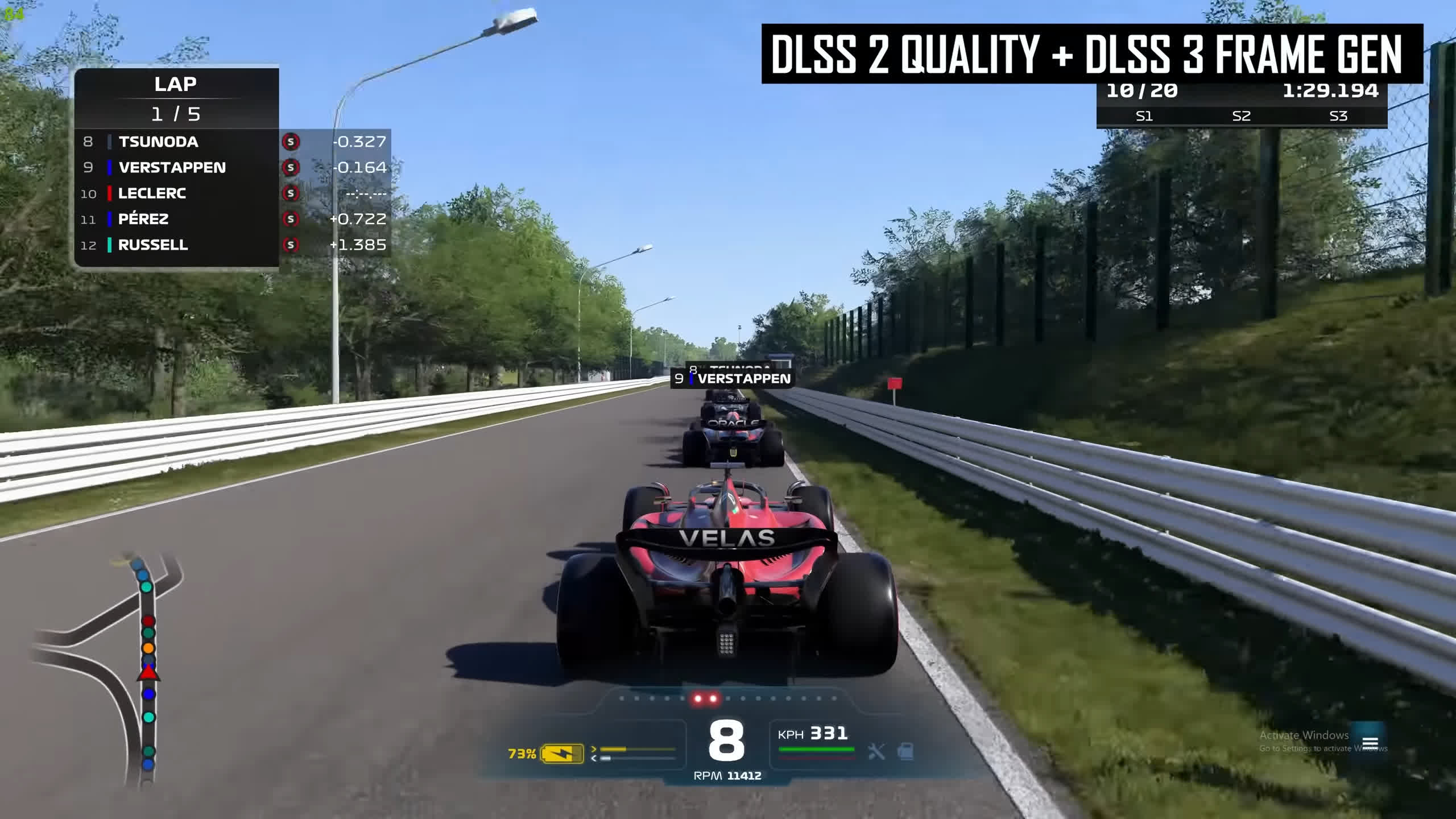
Updating the DLL file doesn't resolve UI issues in all titles though. Some games improved but still had problems, like Spider-Man Remastered, while others such as Atomic Heart and Flight Simulator didn't improve at all. More work needs to be done to get games to the level of Cyberpunk 2077, though it can be worth experimenting with DLL updates, as was the case with DLSS 2.
Other fixes appear to be very game specific. For example, camera angle changes are no longer garbled in F1 22, but the issue is still present in Hitman 3, even though it's a more recent DLSS 3 implementation. Game developers appear to have an inconsistent approach to the technology and it's hard to say how much of this is Nvidia's fault.
We were pleased to see that more games are allowing users to use frame caps in conjunction with DLSS 3 frame generation. At launch, frame caps and vsync were both disabled, so there was no way to limit a game with DLSS 3 enabled from exceeding your monitor's maximum refresh rate. Today, vsync is still not working with DLSS 3, but frame caps are, so there is at least some flexibility to keep FPS inside the max refresh rate to prevent tearing - great news for those with moderate refresh rate displays, like say 165Hz. This isn't yet available in every game though, again it's dependent on developer support.
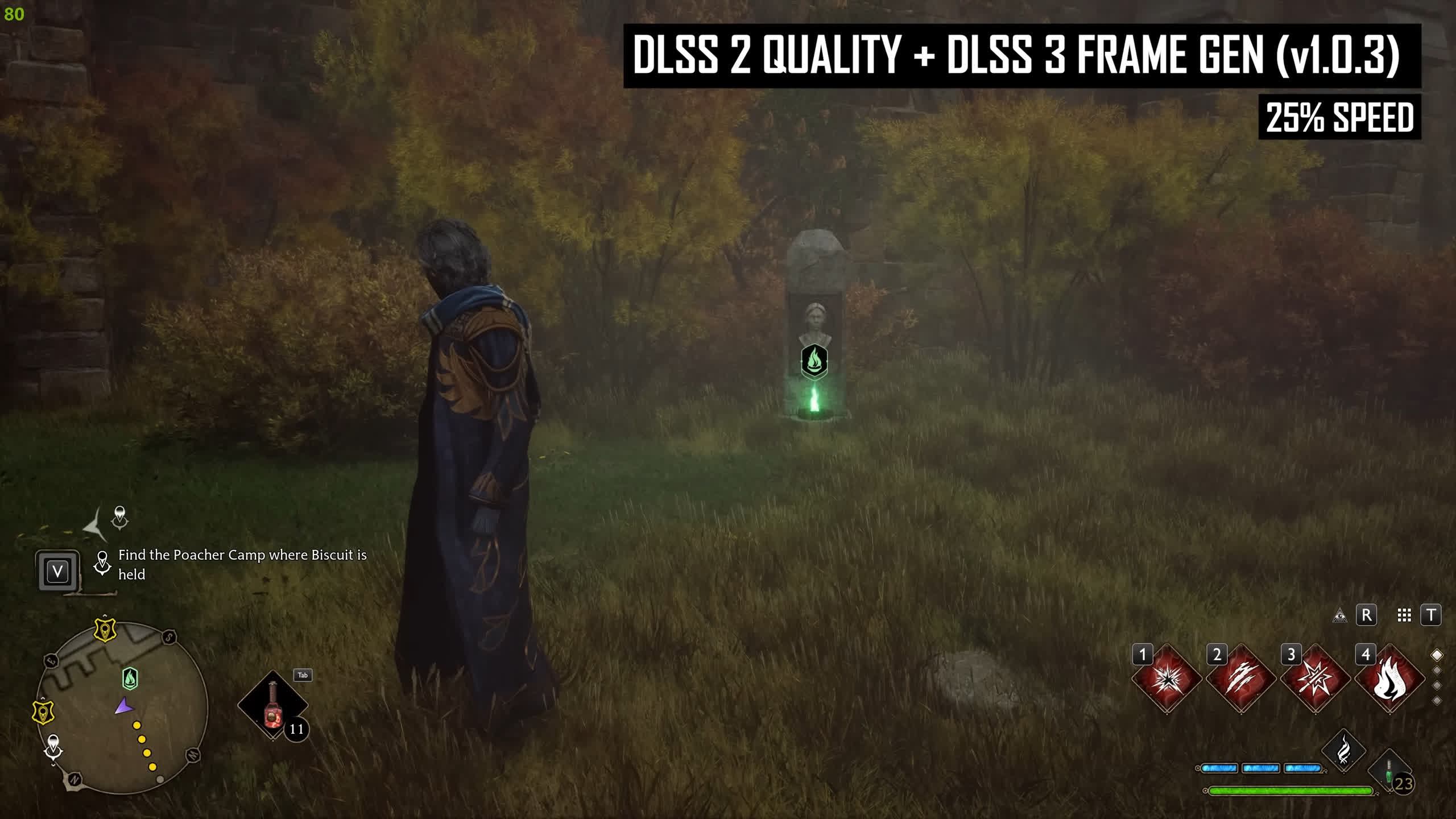
DLSS 3 also remains a great way to improve the experience in CPU limited games, and there's been a few of those recently, such as Hogwarts Legacy. While the tech shouldn't be used as a crutch or excuse for poor optimization, when a high-end system is performance limited to around 60 to 80 FPS even on lower settings, DLSS 3 frame generation can make the game look smoother in these scenarios. It's an ideal use case for the technology and I think a lot of users will put up with some of the visual artifacts if there's no other option for getting a higher frame rate. The best experiences I've personally had with DLSS 3 have been in these scenarios, like Hogwarts Legacy and Flight Simulator.
While I didn't touch on this much in today's review, the latency side of the story hasn't changed with the latest updates to DLSS 3. Frame generation does not improve latency relative to whatever base frame rate you had, so while smoothness does increase with DLSS 3 on, the responsiveness of a game does not. Whether this is an issue for you will depend on how sensitive you are to latency, the type of game, the game engine, and even what you are doing in that game.
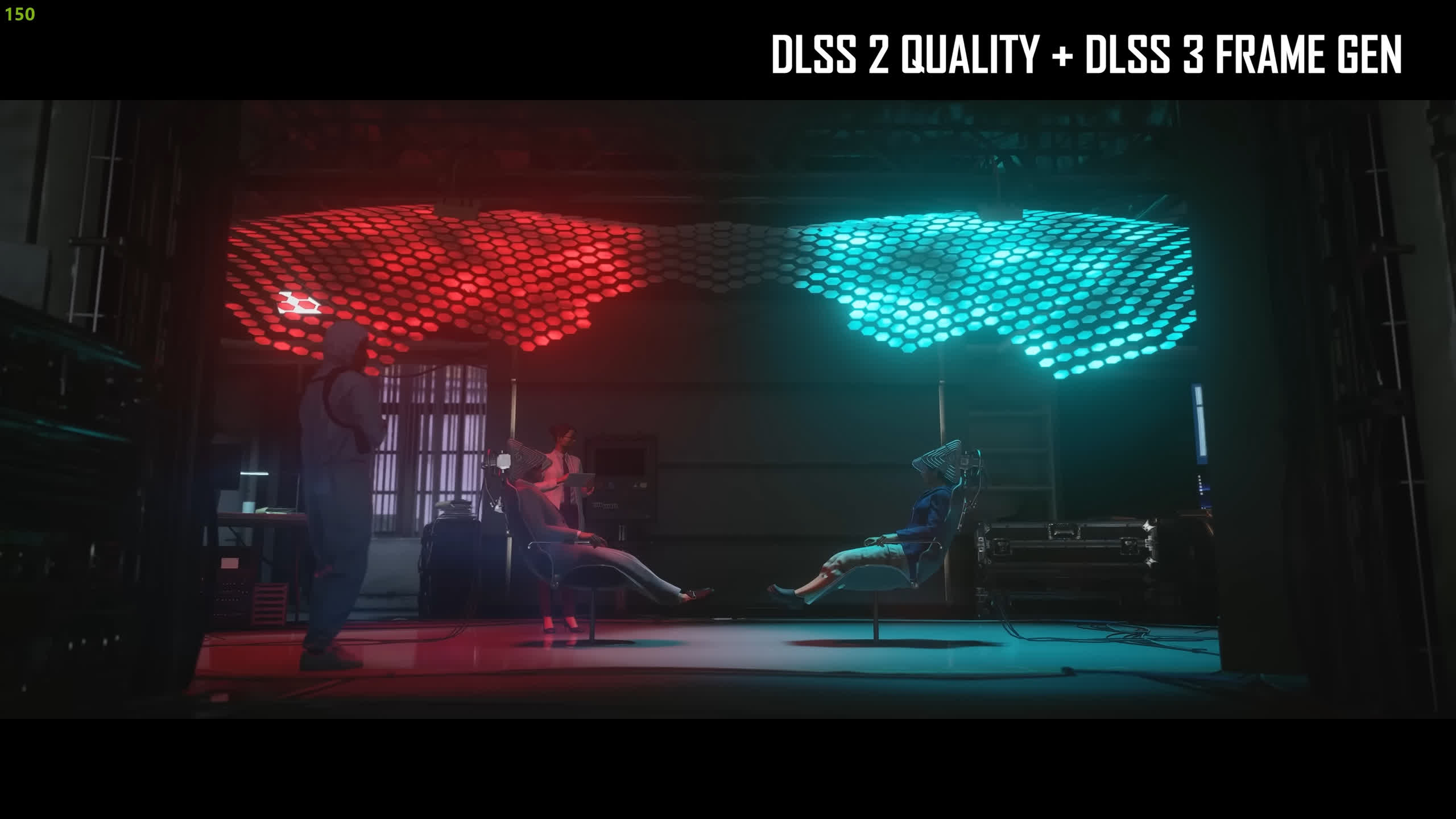
Gamers who are perfectly fine playing single-player titles at 60 FPS with 60 FPS-like latency will be fine with a base frame rate of 60 being boosted up to 100 to 120 FPS through frame generation - it'll feel like a 50 to 60 FPS game with better smoothness. Not as good as true 100 to 120 FPS, but if that sort of latency is acceptable to you, it'll be an overall improvement.
Conversely, if you must have the latency of 100+ FPS to be satisfied, then the 100 FPS produced by DLSS 3 won't be good for you. Nothing has changed in this regard, DLSS 3 is still best suited to single-player games that aren't latency sensitive.
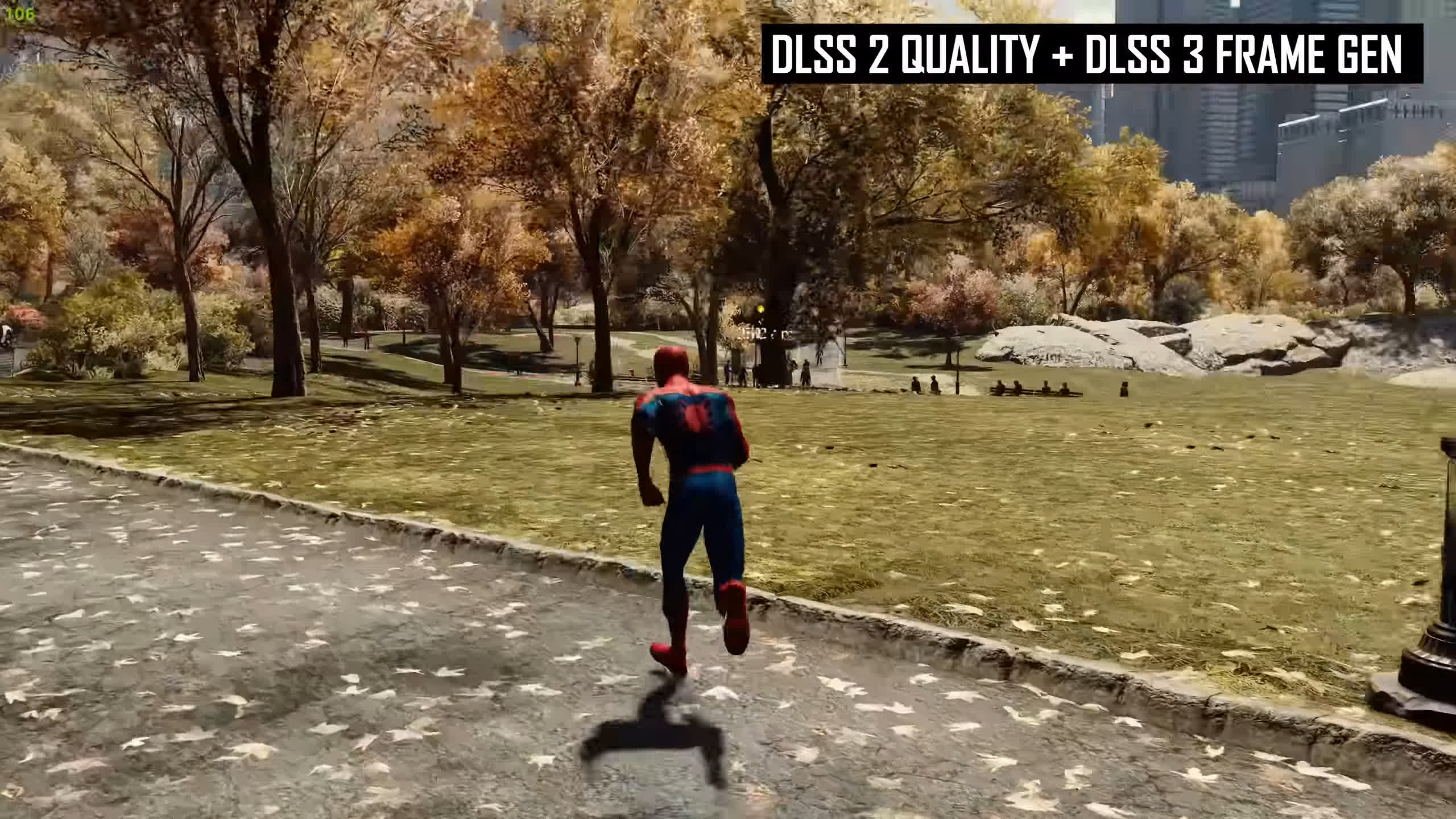
What I've found most interesting though after testing 9 games with DLSS 3 frame generation enabled is that the experience can even differ between games at the same frame rate. For example, I felt that a base frame rate of around 60 FPS (or about 100 FPS with DLSS 3 enabled) was perfectly fine for playing A Plague Tale: Requiem, Spider-Man Remastered, or Hogwarts Legacy, but that same base frame rate felt slow and sluggish in titles like Cyberpunk 2077, Dying Light 2 and Atomic Heart.
I think it's a combination of gameplay and how the game handles inputs which ultimately is going to vary. A base frame rate of 100 to 120 FPS with DLSS 3 pushing up to 200 FPS is pretty much guaranteed to be a decent experience in a single player title though, with good latency and less visible artifacting.
From here I hope Nvidia and game developers continues to work on reducing visual artifacts, both through more training, more optimizations, and simply just using the tools available in the best possible way. I can definitely see a future where things like UI artifacts are not present, we're just not quite there yet.
Shopping Shortcuts:
- Nvidia GeForce RTX 4090 on Amazon
- Nvidia GeForce RTX 4080 on Amazon
- Nvidia GeForce RTX 4070 Ti on Amazon
- Nvidia GeForce RTX 3090 on Amazon
- AMD Ryzen 9 7950X3D on Amazon
- AMD Ryzen 9 7900X on Amazon
- AMD Ryzen 7 7700X on Amazon
本文地址:http://signalforexgratis.com/category/belajar-forex-sfg/forex-expert-tips/
版权声明
本文仅代表作者观点,不代表本站立场。
本文系作者授权发表,未经许可,不得转载。